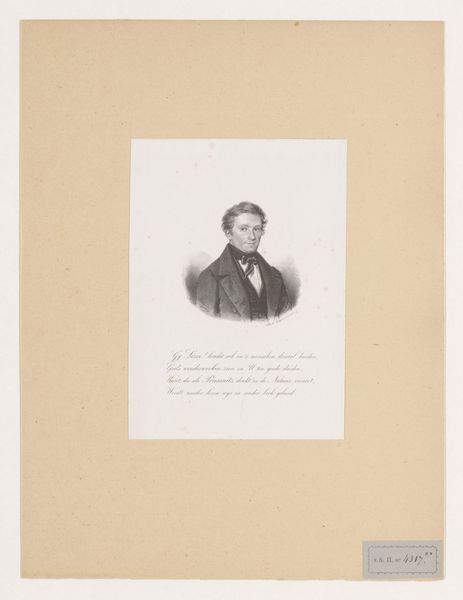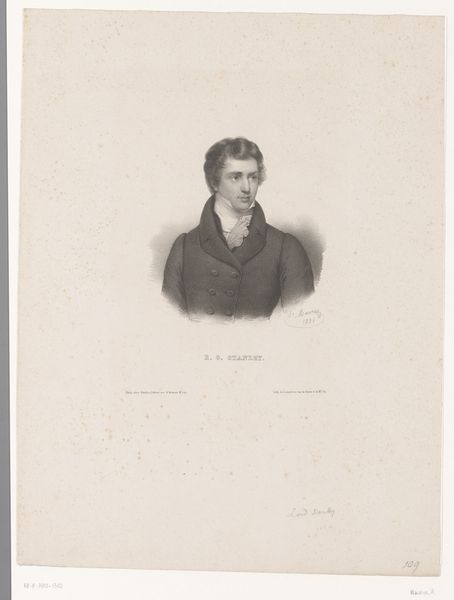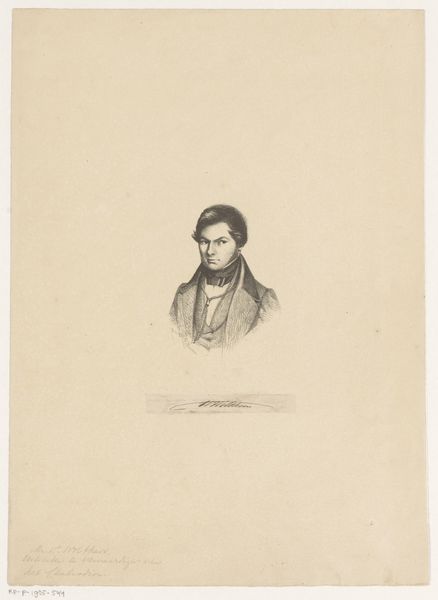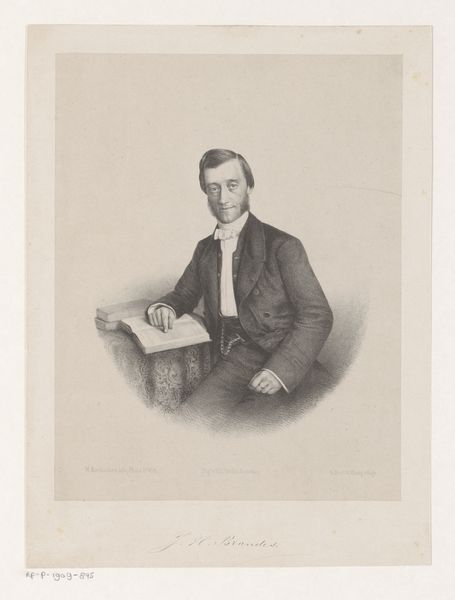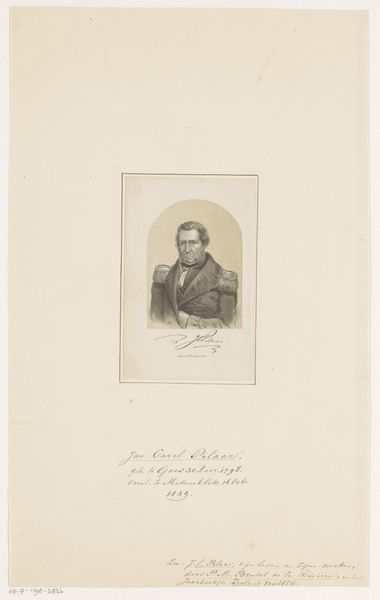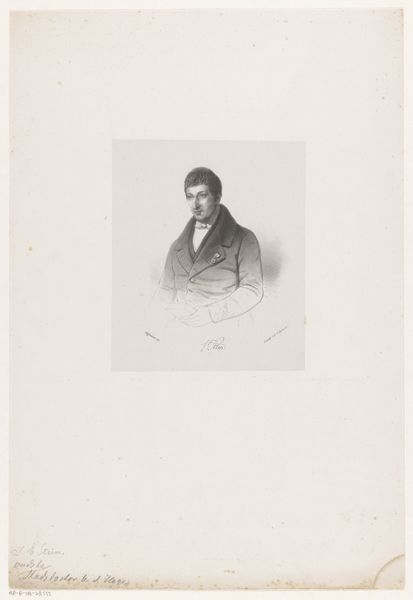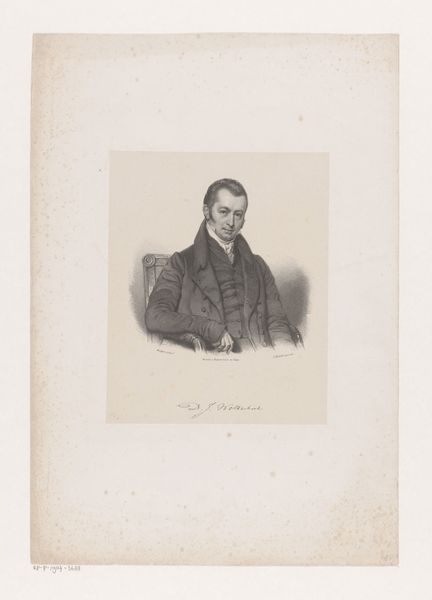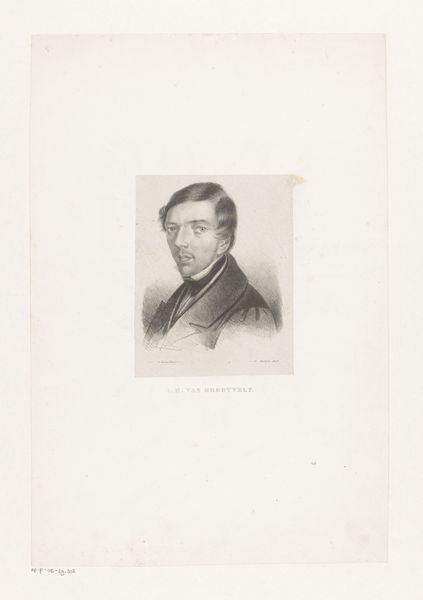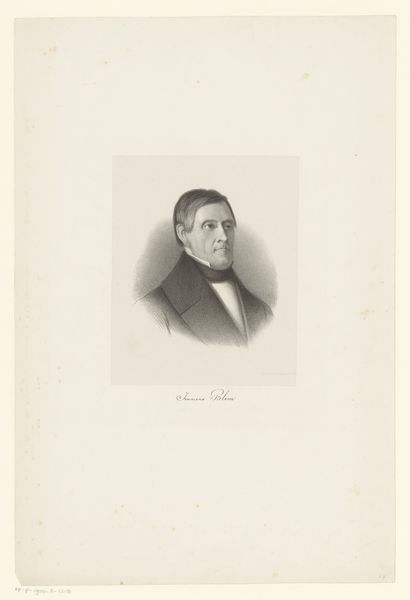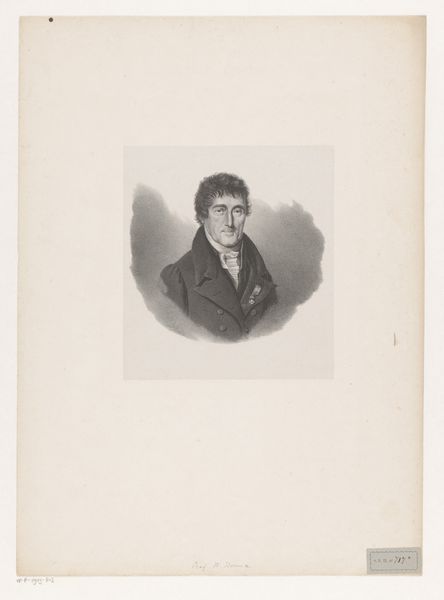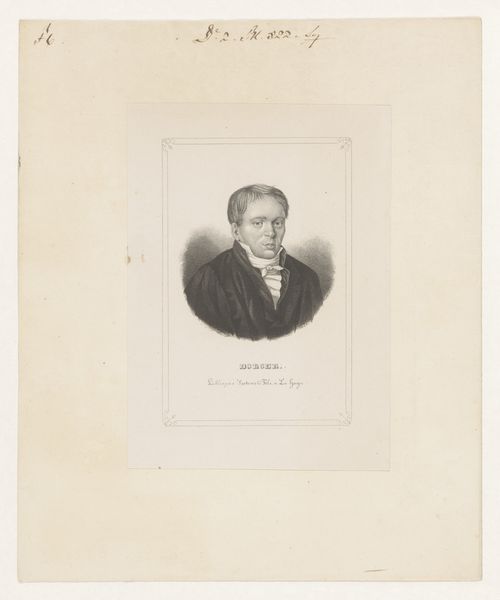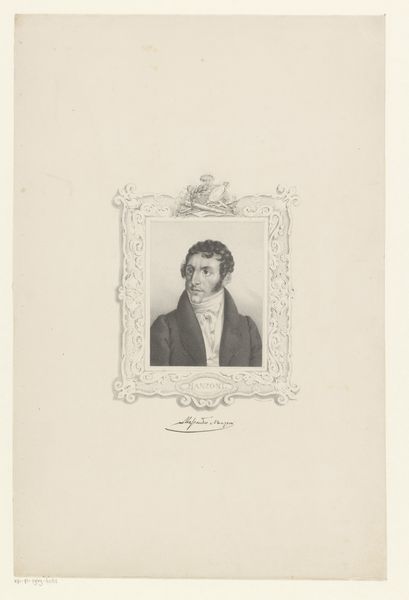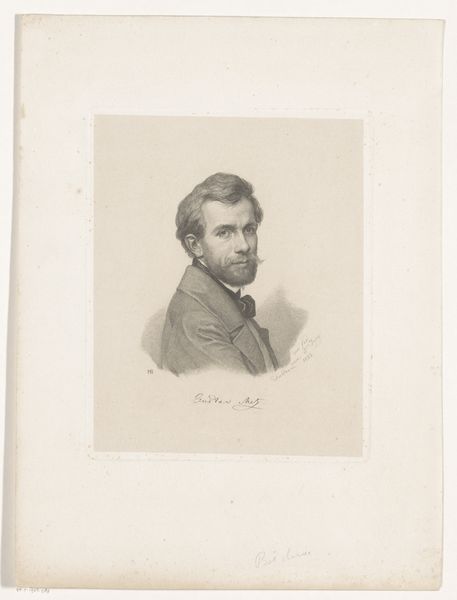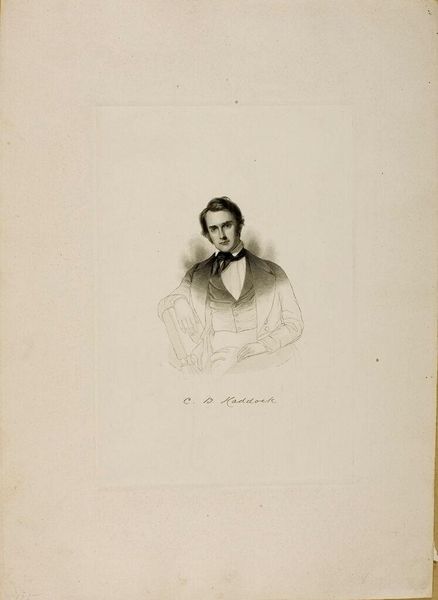
print, engraving
#
portrait
# print
#
old engraving style
#
engraving
Dimensions: height 174 mm, width 132 mm
Copyright: Rijks Museum: Open Domain
Curator: A striking portrait. I am immediately drawn in by the subject’s gaze. Editor: It's quite arresting. The severe clarity of the engraving against all that paper...a stark, formal presentation. Is this the work of Ferdinand Lehman? "Portret van Armand Carrel," they're calling it. A print dating sometime between 1820 and 1900. Curator: It captures more than just a likeness; there's an element of Romantic heroism there, don’t you think? The tightly controlled details convey seriousness. The shadows lend to a quiet air of defiance. Editor: Absolutely. The use of hatching and cross-hatching is masterfully controlled, isn't it? Notice how Lehman uses the density of lines to define form, create depth. The tight focus keeps all attention directed to Carrel’s stern, expressive face. The materiality enhances this—the cool detachment. Curator: Precisely, this control also speaks to the sitter's persona. Carrel, of course, was a well-known political figure, a republican journalist who fought against censorship. So, what at first might seem like artistic style also becomes a potent symbol of character and moral strength. The very act of immortalizing him through the controlled lines of an engraving solidifies his legacy. Editor: I'm curious about that. You think there’s intent behind Lehman's rendering beyond accurate reproduction? Is it a political endorsement of sorts? Curator: It’s almost inevitable to read it that way given Carrel’s history. Even the fact that this image would have been multiplied and distributed widely contributes to an evolving narrative. The engraving itself becomes part of his ongoing political message. Editor: Fascinating how even seemingly austere formal choices—the severe line work, limited tonal range—can speak to much larger ideological currents, cultural struggles. The image, thus, becomes less a frozen depiction of one man and more a living, breathing record. Curator: Indeed, a convergence of personality and epoch, technique, and purpose. The weight of history contained in a few precisely etched lines. Editor: An eloquent testament to how method can both reveal and obscure truths.
Comments
No comments
Be the first to comment and join the conversation on the ultimate creative platform.
